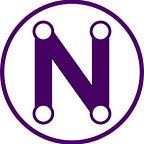Assets in Neurai
Neurai has integrated into the chain itself the use of Assets using the 80 byte space of OP_RETURN to move information over time. It also contains an indexer built into the node itself, which allows these assets to be identified and facilitates access to this information, along with a set of different types and independent qualities.
Unique Names
In Neurai, it is not possible to have multiple Assets with the same name. Once one is created, it will not be possible to duplicate it. This reduces the complexity of identifying Assets, facilitating identification and avoiding constant confusion as occurs in other chains that are identified by the assigned contract.
How the names can be
- Name: 3–30 capital letters, numbers, “.” and “_”.
- Conditions: “.” and “_” cannot be at the beginning or end of the asset name and cannot be next to one another.
Why can they only have 30 characters?
The limitation is set by the space used in OP_RETURN to store information, limiting names for Assets to 32 bytes and the rest of the bytes of OP_RETURN used for internal information of the Asset. In the near future, we will extend this limitation to allow for longer names, thus increasing the possibilities in the Asset trees that can be created.
Data Assignment
Along with the creation of the Assets, it is possible to assign data of any type through IPFS. This way, it is possible to create a series of NFTs with an image, formalize a signed document, or assign unique art.
More information about IPFS:
https://docs.ipfs.tech/concepts/what-is-ipfs
Example of valid names
Here are a few examples of how domains can and can be generated:
- HOUSE
- 123
- WORLD.COM
- TIME_AND_SPACE
How can I know all the Assets created?
Neurai-cli
neurai-cli listassetsNeurai-qt / debug / console
listassetsPrice to create Assets
Asset = 1000 XNA
SubAsset = 200 XNA
Unique Asset = 10 XNA
Msg Channel Asset = 200 XNA
Qualifier Asset = 2000 XNA
Sub Qualifier Asset = 200 XNA
Restricted Asset = 3000 XNAWho receives the payment
Every payment related to the Assets is sent to addresses where they cannot be spent, remaining outside the network forever.
This will allow for a balanced ecosystem in the future between the generation of new coins that guarantees the properties of the network and prevents continuous inflation.
These are the burn addresses:
Global Burn = NbURNXXXXXXXXXXXXXXXXXXXXXXXT65Gdr
Issue Asset = NXReissueAssetXXXXXXXXXXXXXXWLe4Ao
Reissue Asset = tAssetXXXXXXXXXXXXXXXXXXXXXXas6pz8
SubAsset = NXissueSubAssetXXXXXXXXXXXXXX6B2JF
Unique Asset = NXissueUniqueAssetXXXXXXXXXXUBzP4Z
Msg Channel Asset = NXissueMsgChanneLAssetXXXXXXTUzrtJ
Qualifier Asset = NXissueQuaLifierXXXXXXXXXXXXWurNcU
Sub Qualifier Asset = NXissueSubQuaLifierXXXXXXXXXV71vM3
Restricted Asset = NXissueRestrictedXXXXXXXXXXXWpXx4HWhat is a sub-Asset
This is the same as an Asset, but only the controller of the initial Asset can generate it.
The price is lower and allows for the creation of a name tree. We have the Asset “EUROPE” and want to create subassets, these would be as follows:
EUROPE/PORTUGALBut it is also possible to expand to the next level.
EUROPE/PORTUGAL/LISBONThis can be done as a hierarchy tree and it is possible to do it up to the total limitation of the names, which is 30 characters.
EUROPE/PORTUGAL/LISBON/AMADORAAs mentioned above, we will extend this limitation to allow larger names and more powerful hierarchies.
Hierarchy Tree
Assets in Neurai allow a series of hierarchies that offer multiple possibilities as seen above.
To understand this, it is best to see it with a graphic that explains it in a simple way.
As shown in the image, it is possible to keep adding levels in the tree up to a maximum of 30 characters in the total name.
In the future, when this element is modified, it will be possible to make larger trees with more possibilities.
Qualifiers and restricted assets
Asset Qualifiers allow identifying which addresses can obtain restricted Assets. To understand this, it is necessary to grasp that there are various ways to assign an Asset. You can do it in a decentralized manner, and anyone who makes the payment can obtain it, but the seller can also choose another method and only sell to addresses that have a specific Asset Qualifier.
Example:
A car vendor only allows sales to those who have the Asset Qualifier #KYC_Europe. If you want to buy the car, you must go to the entity distributing KYC_Europe, pass their KYC system, and they will assign the Qualifier #KYC_Europe to your Neurai address. When you go to buy the car, you will be able to do so to the address with #KYC_Europe because the car seller does not allow their Assets to be moved to addresses that do not have that tag.
The example is with KYC, but it is possible to use it for any system that allows having a dual security system for moving Assets, such as having a private club that only certain addresses can access, and only those who have such a non-transferable Asset will be able to access.
RWA
RWA refers to Real-World Assets, which are Assets assigned a real-world asset. This allows a real-world good to be acquired from a decentralized network without the need for complex administrative systems and secured by the blockchain and the PoW consensus that Neurai has.
Together with Restricted Assets and Asset Qualifiers, it is possible to ensure that the destination of the RWA Asset is real and not counterfeit.
In Neurai, we will use IoT devices to assign an ASSET to parts, products, articles, or anything that wants to be tokenized. With the different types of hierarchies, it is possible to guarantee the origin of the Asset and to trace the entire journey of the Asset comfortably.
TESTS ASSETS
Currently, we have several services to test the Assets and understand their behavior. This can be done on the Testnet network, and we have an article explaining how to do this without spending Neurai coins.
